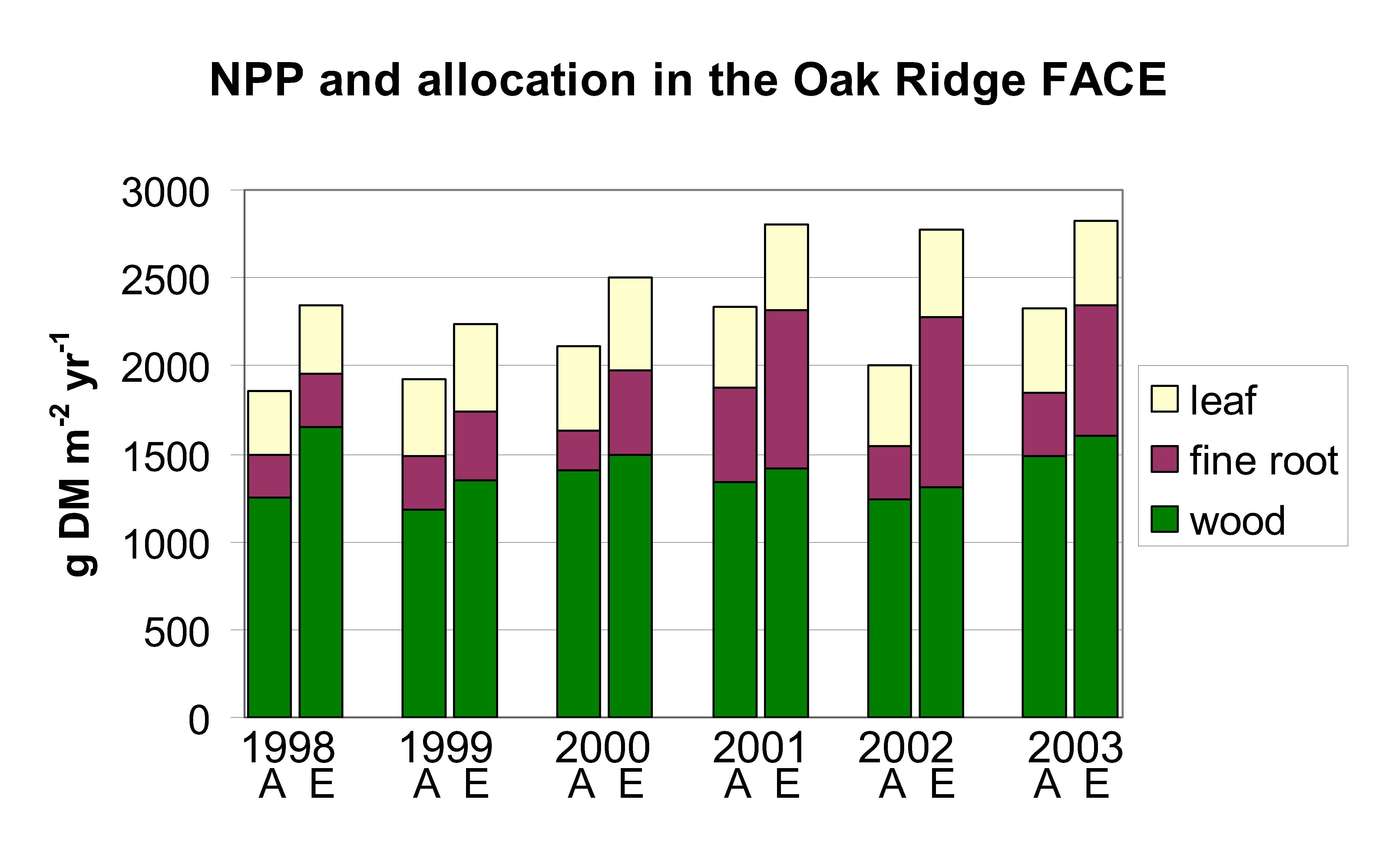
Results
Results
Colleen Iversen et al. interviewed by WUOT's Chrissy Keuper (mp3)
Colleen Iversen discusses her dissertation research and Wesley Award
NPP synthesis highlighted in Editors' Choice section of Science, January 6, 2006
See Argonne National Lab press release about soil carbon in ORNL FACE, December 20, 2005
See ORNL press release about synthesis of NPP across four forest FACE experiments, December 7, 2005
See article in Science, 24 August 2001, about recent FACE results
- Net primary productivity has increased in elevated CO2 each year, averaging 22% higher.
- Aboveground wood production was 35% greater in CO2-enriched plots during the first year of exposure. In the second year, however, the difference in growth was reduced to 15% and was no longer statistically significant, with further reductions in the third and subsequent years.
- The increased carbon uptake is being allocated to fast-turnover pools - leaf mass and especially fine-root production - and not to woody biomass.
- Fine-root production has more than doubled in response to CO2 enrichment starting in the third exposure year, but turnover rate has not been affected. CO2 enrichment especially stimulated fine-root production deeper in the soil profile.
- Increased fine-root mortality added more C to the soil in elevated [CO2]. C efflux from soil also increased; nevertheless, elevated [CO2] caused a significant increase in C accrual in the surface 5 cm of soil. The average accrual rate was 44 g C m-2 y-1.
- Photosynthetic CO2 assimilation averaged 46% higher in elevated [CO2]. The response was sustained throughout the canopy, and there was no loss of photosynthetic capacity over time.
- Leaf area index has not been affected by [CO2]. Absorption of photosynthetically active radiation (APAR) also has not been affected; therefore, gains in NPP are attributable to increased light-use efficiency.
- Stomatal conductance in upper canopy leaves was reduced as much as 44% in elevated [CO2], but the responses of canopy conductance and stand transpiration averaged over the growing season were much less (14% and 10%, respectively).
- Annual N uptake increased linearly with fine-root length duration and was significantly greater in elevated [CO2]. Leaf and litter N concentrations were reduced in elevated [CO2], but there was no indication of a negative feedback of N availability on NPP. The need to elucidate changes in stand-level biogeochemical cycling is one of the foremost reasons to conduct FACE experiments in forests, but these responses require a long-term perspective.
